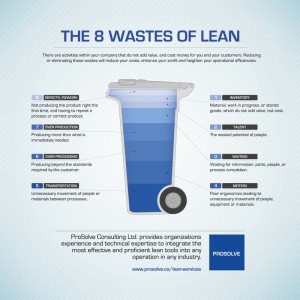How can a reduction in excessive walking lower an organizations’ carbon footprint?
 It’s common knowledge that walking has great benefits to a person’s health, and numerous fitness and health professionals highly encourage walking to enhance an individual’s health. However, an Edmonton-based management consulting company is encouraging organizations to reduce excessive walking at the workplace.
It’s common knowledge that walking has great benefits to a person’s health, and numerous fitness and health professionals highly encourage walking to enhance an individual’s health. However, an Edmonton-based management consulting company is encouraging organizations to reduce excessive walking at the workplace.
ProSolve Consulting, Ltd. says companies need to realize that too much on-the-job walking can be detrimental to the organization’s productivity health, and actually contributes to increasing the company’s carbon footprint.
As Canadians take efforts to be more lean and green during Waste Reduction Week, ProSolve would like to encourage people to eliminate their “walking waste” in the workplace.
“Wastes from walking are one of the leading causes of ‘death’ to an organization’s bottom line,” says David Hall, President of ProSolve Consulting, Ltd. “In our experience, few employers realize that by simply reducing the number of movements their employees need to take to accomplish their daily work tasks can significantly improve their organization’s productivity, eliminate wastes, and reduce their carbon footprint.”
Hall also notes that, “Organizations that have too many employees walking unnecessarily spend more money on space, time and quality than organizations that have eliminated their walking wastes.”
The effects of excessive walking in the workplace can have a negative impact on employees, as well as the organization, including:
- fatigued employees with reduced levels of alertness, impacting safety and product quality.
- wasted space that inevitably fills with work-in-process, scrap, or garbage; areas that are difficult to clean and contribute to poor housekeeping. There is a direct correlation between housekeeping and safety.
- poor space utilization is expensive, costing extra heating, lighting, taxes, and rent, which produce nothing in return for the organization, and increases the organization’s carbon footprint.
- extra space that hides process inefficiency; as the cost of the hidden factory goes up, productivity and profitability goes down.
ProSolve prescribes the following simple steps to reduce excessive workplace walking:
- start small. Pick an area that seems to have lots of people movement, but not a lot of productivity. Are employees moving from station to station empty-handed? Are they carrying tools instead of product? Are they moving around searching for things?
- create a process flow diagram of the area, and compare it to the physical layout of work stations? Are the workstations placed in the same order as they are on the flow diagram? If not, re-order the workstations to match the flow diagram, so products (not people) move from station to station.
- move the work stations closer to one another. This will reduce walking and free up space that can be used more profitably.
- Are the employees walking around stacks of inventory? What is the source of this additional inventory? You can reduce the waste of too much walking by addressing another source of waste – over-production. Eliminate the extra inventory and further reduce walking distances, while opening up areas for more profitable activity.
So, as everyone is gearing up to do their part during Waste Reduction Week, ProSolve advises people to walk to work, but take note of their step count during work shifts, and implement small ‘step-saving’ techniques to be waste wise while at work.

